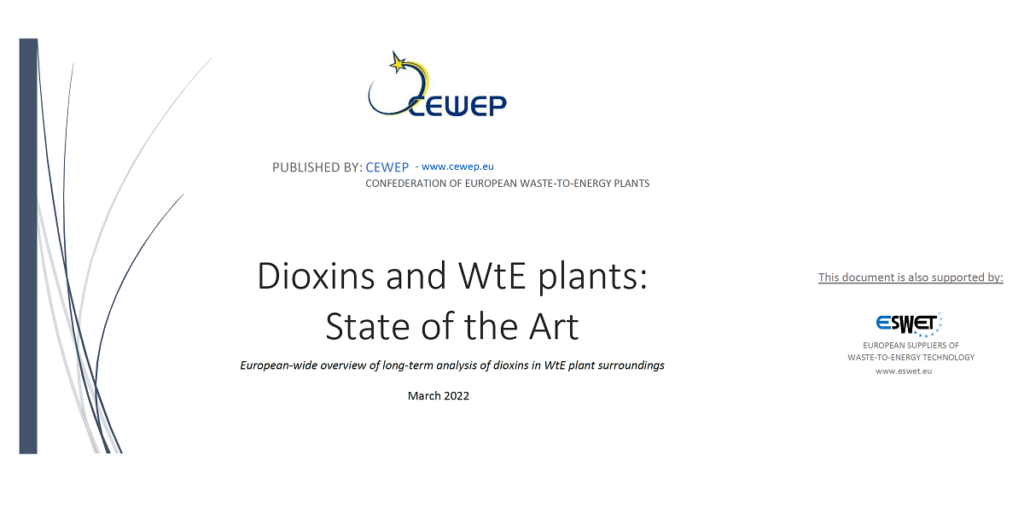Dioxins and Waste-to-Energy plants : New report on the State of the Art

ESWET is co-signing a report prepared by CEWEP showing how Waste-to-Energy plants act as a pollution sink.
Contrary to recent claims from anti-incineration groups, European WtE plants have demonstrated very low emissions and impact on their surroundings. The Waste-to-Energy sector is one of the most strictly regulated industrial sectors in Europe.
While a lot has been said on high dioxins emissions, recent biomonitoring studies conducted by those groups failed to show a direct correlation with the plants, and even conclude in one instance that : “More data is needed to draw any conclusions about a link between the results of this biomonitoring study and the emissions from the waste incinerator.”[1]
Indeed, the public misconception of WtE plants as a major source of dioxins does not reflect the current situation.
Based on an overview of existing literature and recent data from operators, CEWEP found that:
- Assessments and comparisons between emissions at the stack of WtE plants and concentrations measured in the surroundings have shown that when dioxins are found in the surroundings of a WtE plant there is no correlation with the plant’s emissions.
- EU Waste-to-Energy plants are subject to and comply with one of the most stringent regulations in terms of pollution prevention and control. Since 2019 an even more ambitious set of limits for dioxins and furans has been put in place with the publication of Waste Incineration BAT (Best Available Techniques) Conclusions. Today, dioxin emissions from WtE account for less than 0.2% of the total industrial dioxin emissions.
- Monitoring of dioxins is associated with both stringent limits and extended periods, meaning that measurements must be carried out during operating stages, including start-up and shutdown.
- Data assessments, comparisons and long-term experience of operators have shown similar emission patterns between periodic measurements and continuous sampling. A well-managed EU WtE plant emits extremely low concentrations of dioxins and furans (sometimes below the limit of detection of the instruments) thanks to its sophisticated combustion control and pollution abatement system. This happens regardless of the specific measuring equipment.
The full report is available here: “Dioxins and WtE plants: State of the Art, European-wide overview of long-term analysis of dioxins in WtE plant surroundings“.
[1] ToxicoWatch (2022), Biomonitoring research results from Kaunas, Lithuania, page 63, available here.